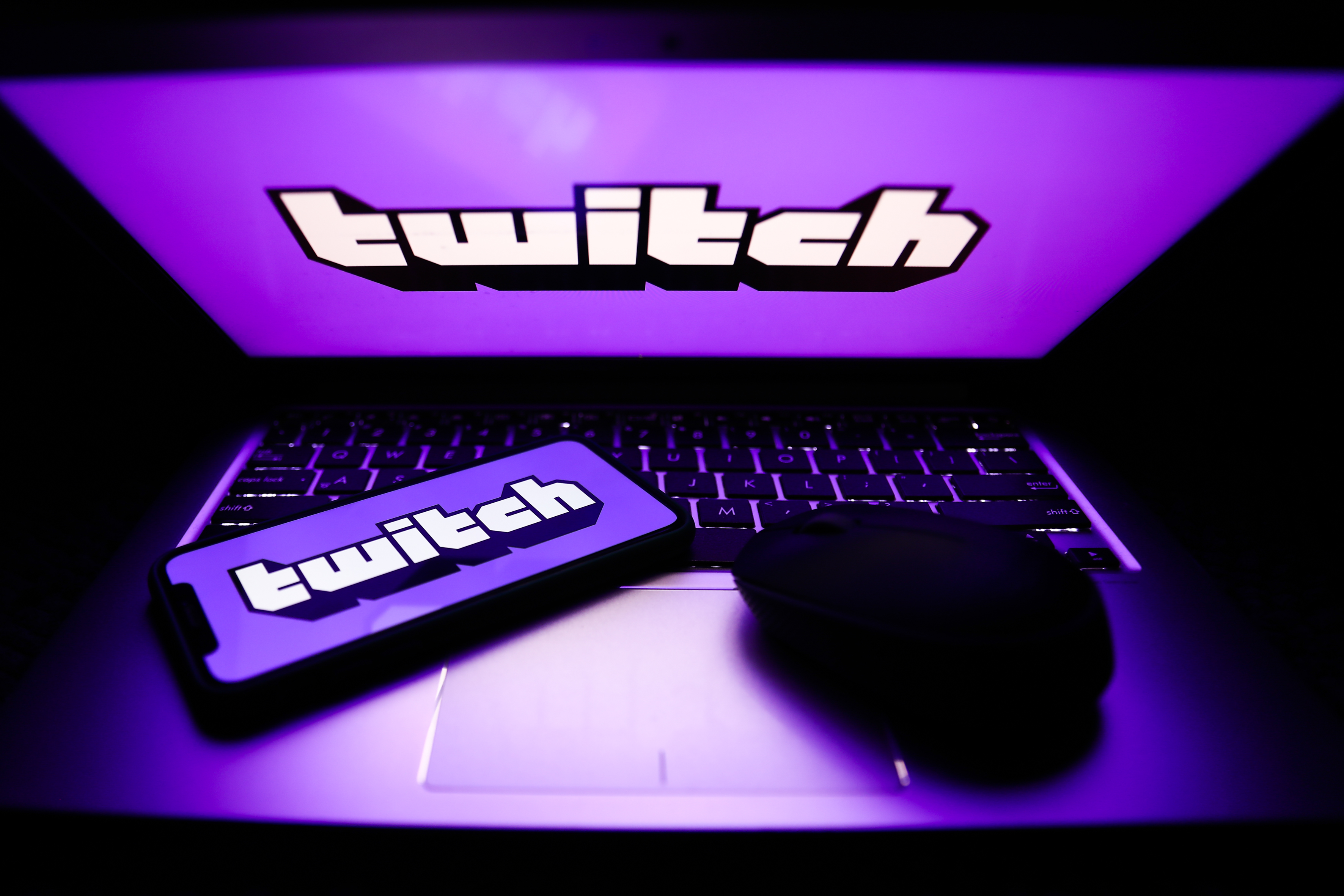Twitch refuses to give streamers a better deal, despite pressure from users
I am altering the deal. Pray I do not alter it any further.

Mere days after winning plaudits for banning gambling advertisements on its platform, Twitch decided it had stacked up enough goodwill among streamers: and decided to piss them all off. Recently, there's been an increased push by content creators for Twitch to change its revenue split in favour of streamers: from the current 50/50 to 70/30. This came with a petition signed by 22,000 streamers and viewers, and was inspired by the revelation that Twitch was in fact paying some of the most prominent streamers a 70/30 revenue share already, but had stopped offering such deals even for the biggest channels.
Twitch has now responded to these demands, with the corporate equivalent of a big red stamp saying DENIED.
Dan Clancy, president of Twitch, published an open letter about the platform's new approach. It goes into some detail about why Twitch has reached the decision it has, while also including some empty platitudes about "our global community" and how "we support all streamers’ careers and ambitions like they’re our own."
Essentially, Clancy says that the vast majority of Twitch streamers receive "a baseline revenue share of 50/50 on the net revenue from those earnings." That is to say, subscription revenue. But streamers who grew larger have in the past been offered "premium subscription terms" which were higher, without any "consistent framework to determine who would receive these deals and when." Clancy says that more than a year ago Twitch stopped offering such deals, although it continued to honour existing ones.
Then there's a brilliant bit of table-flipping. Clancy says that Twitch realised it was (a) not being "transparent about the existence of such deals" (b) wasn't consistent in the criteria used to award them (ie there was none) and the coup de grace is (c) "we don’t believe it’s right for those on standard contracts to have varied revenue shares based on the size of the streamer."
That is, the argument being made by streamers was that if big streamers are getting 70/30, that's unfair to the mass of smaller streamers on 50/50 who are also contributing to the wider Twitch ecosystem. Twitch is saying it accepts that argument: but rather than bringing all streamers up to parity, they're going to squish the big ones down.
"For these streamers still on these premium deals, we’re adjusting the deal so that they retain their 70/30 revenue share split for the first $100K earned through subscription revenue," writes Clancy. "Revenue above $100K will be split at the standard 50/50 share split. We’re announcing this change now, but it won’t go into effect until after June 1, 2023. After that point, streamers will only be affected once their existing contract is up for renewal."
The biggest gaming news, reviews and hardware deals
Keep up to date with the most important stories and the best deals, as picked by the PC Gamer team.
Clancy touts a recent change to the ad revenue split (55% in favour of the streamer) as a mitigating factor, before going on to say, despite the guff about transparency, that "we will, in rare cases, continue to negotiate custom agreements on a case by case basis."
While streamers are still catching their breath at this, Clancy goes in for the kill: why not 70/30? "When we first established a 50/50 revenue share split, it was to signal that we’re in this together," writes the president of the world's largest streaming platform, which itself is owned by Amazon.
Amazed that this blog post announcing creator pay cuts, also included mention the site’s owner: Amazon, a literal trillion dollar company. Servers that can’t even support streams over 8k bitrate. Youtube offers 70/30 revenue split, and over quadruple the bitrate. pic.twitter.com/BH0kBm7z9RSeptember 21, 2022
Clancy goes on to say that Twitch has received feedback from 22,000 streamers about the 70/30 split and paying streamers faster. He says in response to the latter that the payout threshold has been halved to $50, and the company's long-term goal is "same day payouts and lower thresholds."
Twitch says features such as Prime Subs, Community Gifting, Hype Train, and the Ads Incentive Program "have driven an increase of 27% more streamer revenue per viewer hour every year over the last five years. This means the same viewer hour now earns [streamers] three times more money than it did five years ago, on average."
Therefore, goes the platform's logic, it has already "put more money into streamers’ pockets than 20% more subs revenue share would have."
Then the haymaker: the cost of running Twitch. Clancy writes that "live video costs for a 100 [concurrent viewers] streamer who streams 200 hours a month are more than $1000 per month. We don’t typically talk about this because, frankly, you shouldn’t have to think about it. We’d rather you focus on doing what you do best. But to fully answer the question of 'why not 70/30,' ignoring the high cost of delivering the Twitch service would have meant giving you an incomplete answer."
Twitch is here effectively saying that the platform's technology and featureset is what's enabling all the money to be made, and on top of that it is already subsidising smaller streamers. Clancy does not explicitly say, of course, that a streamer with 100 viewers who does 6-7 hours a day costs Twitch $1000 a month to host without necessarily bringing in $1000 a month. But that's the underlying argument.
The letter ends with some lip service about communities and streamers and all the money to be made on Twitch, before including as an addendum the email sent to those streamers who will be affected by the change. The email details the change as follows:
- We will continue to offer you 70% of subscription revenue share for all subscription Tiers up to a maximum subscription revenue of $100K USD annually.
- For subscription revenue in excess of $100K USD, your sub revenue share rate will default to the standard Partner rate of 50% for Tier 1 subscriptions, 60% for Tier 2, and 70% for Tier 3 for the remainder of the 12-month period.
- The $100K USD threshold will be calculated over a 12-month period starting from your annual agreement renewal date. The $100K USD threshold will reset on the first day of the subsequent 12-month period, and each 12-month period thereafter.
- Once we implement this change, progress towards the $100K USD threshold will be trackable on your creator dashboard.
- The subscription revenue threshold of $100K USD applies to all subscription earnings, including Prime subscriptions, and will not impact any other revenue shared with you (advertising, Bits, etc.)
So Twitch will no longer give the 70/30 split to any streamers after June 2023 but, for those on that deal, they get the sweetener of it continuing to apply to the first $100K in subs revenue. Spinning this as fairer to small streamers is pretty brazen, but at the same time there's a grain of truth to it: a flat structure for all but the most exceptional cases is arguably fairer than what exists now.
It's also important to remember that Clancy may be the president of Twitch, but he's also the messenger for a business that is still apparently not turning a profit. I say apparently because Amazon doesn't release separate financials for Twitch. There is a tonne of money sloshing around this ecosystem, for sure, but in the long run Twitch must be self-sustaining: and the prospect of going from a 50% to a 30% cut in subs revenue must have given some execs sleepless nights.
This is a super manipulative statement. The TL:DR is you're cutting your biggest partners revenue rates purely to push your ad program and make the average viewer experience suffer. It's worded as a noble thing when you're just trying to shove more ads down everyones throatsSeptember 21, 2022
Yesterday Twitch announced banning Gambling streams, which is great.Today they announced dropping partner revenue split by 20%, which means YouTube (the platform that keeps stealing top creators) now offers more & fairer pay for creators.We couldn't have one nice day Twitch. https://t.co/K9gi69vFq7September 21, 2022
One of the more interesting questions this raises is what, exactly, streamers are in the sense of employment. The huge ones sign contracts, sure, but for most streamers clicking their agreement on a TOS list is enough to get started, and then they're what in relation to the platform… a contractor? Certainly not an employee. There's a fuzziness about this relationship that, to be fair to both sides, exists because this way of making a living is still so new.
This move is obviously something of a gamble. Twitch's biggest rival is Youtube, where the creator split from subs is already 70/30 and a host of stars have been tempted by big money deals. The bet is that Twitch is so big and the platform can offer so much more in terms of a streamer-dedicated featureset that even the larger streamers will grumble about this, then move on to the next thing. For all the patter about being in this together, this is a clear and simple stance. Twitch is telling streamers that the platform doesn't need them as much as they need it.

Rich is a games journalist with 15 years' experience, beginning his career on Edge magazine before working for a wide range of outlets, including Ars Technica, Eurogamer, GamesRadar+, Gamespot, the Guardian, IGN, the New Statesman, Polygon, and Vice. He was the editor of Kotaku UK, the UK arm of Kotaku, for three years before joining PC Gamer. He is the author of a Brief History of Video Games, a full history of the medium, which the Midwest Book Review described as "[a] must-read for serious minded game historians and curious video game connoisseurs alike."

